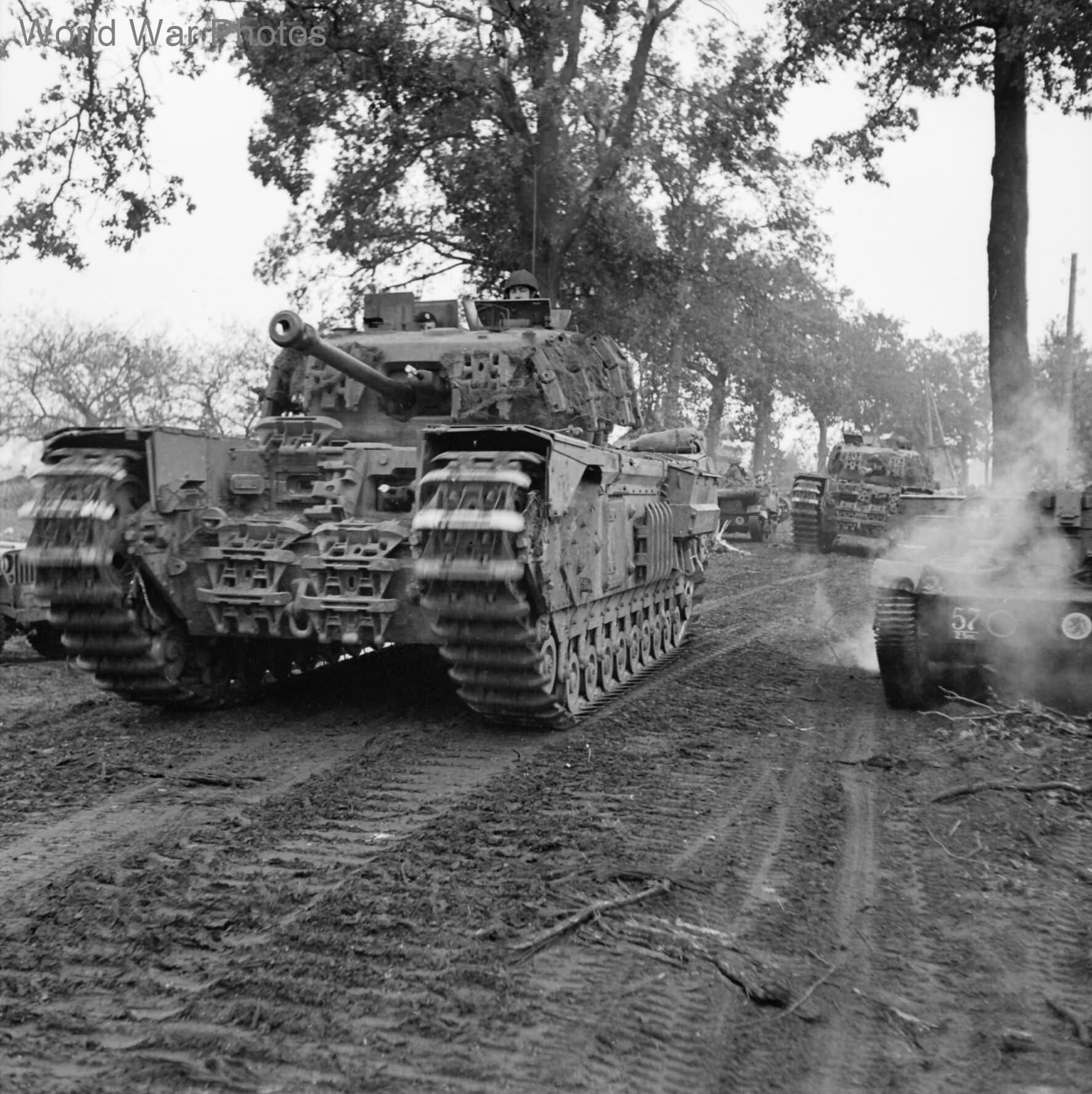The original Churchill tanks were heavily armored, with 102mm of armor on the hull front and 89mm on the turret front, the two areas most likely to be hit in combat. When the Churchill was introduced, this level of protection rendered it immune to most German tank guns at typical combat ranges. However, as German tanks and anti-tank guns became more powerful, the Churchill’s armor began to show vulnerabilities.
The tank’s side armor was 76mm, and the rear armor was 51mm, offering reasonable protection but still thinner than the front. One notable weakness was the internal gun mantlet, which created a shot trap on the turret front. The deep shadow it cast made it easier for enemy gunners to aim at the turret. Another drawback was the lack of sloped armor, which could have increased its effective thickness and deflected incoming rounds. By contrast, some other British tanks, like the A13 Covenanter, used sloped armor to improve protection. Despite these weaknesses, Churchill crews landing in Normandy generally felt confident in their tank’s ability to withstand anti-tank fire. According to the 9th Royal Tank Regiment’s (9 RTR) war diary, the Churchill stood up well to enemy fire, was slow to catch fire, and crews had a good chance of escaping if necessary.
To further increase protection, Churchill crews often welded spare track links to their tanks as makeshift additional armor. Though the War Office doubted that these track links made a significant difference, they boosted crew morale by providing an extra sense of security.
The Mark VII ‘Heavy Churchill’ (A22F) variant, introduced in late 1943, featured significantly thicker armor. The front hull and turret armor were increased to 152mm, while the sides were reinforced with 95mm of armor. The rear remained at 51mm. This level of protection surpassed even the famous German Tiger I, despite the Churchill only gaining an additional ton of weight. The improved armor gave Churchill crews a reasonable chance of surviving even hits from the powerful 88mm guns used by German tanks and anti-tank weapons.
One of the greatest dangers for tank crews was fire, particularly from exploding ammunition. About 25% of crew casualties were due to burns. To reduce this risk, armored ammunition bins were introduced in the Mk VII and retrofitted to some earlier models. These bins helped to protect the tank’s ammunition from igniting when hit. Though only a minority of Churchills in Normandy were Mk VII variants at the beginning of the campaign, their numbers grew as the fighting continued.
Interestingly operational research by the 21st Army Group concluded that further increasing the armor thickness would have diminishing returns. Instead, the best way to improve the survivability of the Churchill was to increase its firepower. By destroying enemy vehicles more quickly and at longer ranges, the Churchills could reduce the number of hits they took, improving their chances of surviving on the battlefield.
